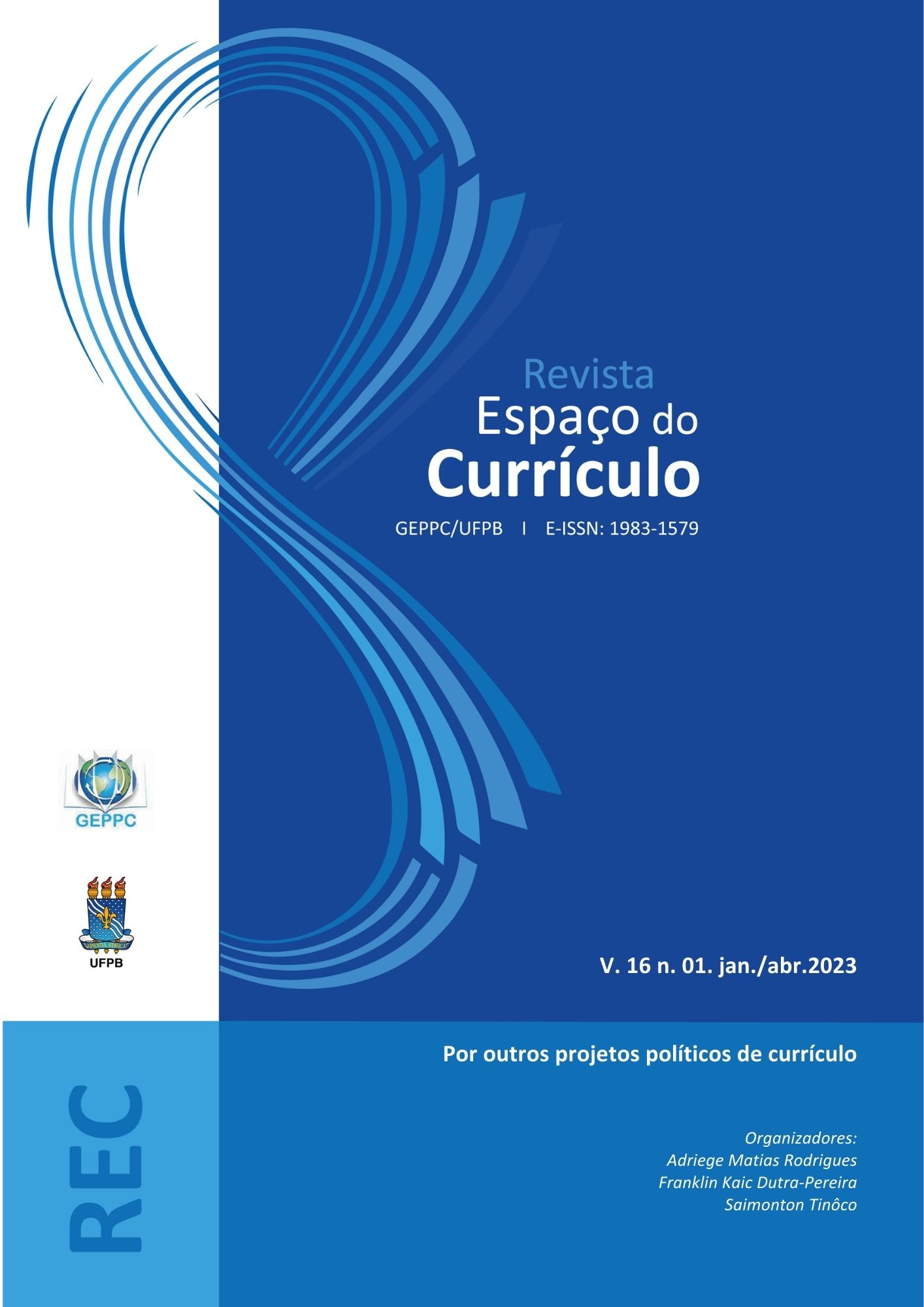RETHINKING EDUCATIONAL SPACES IN RURAL SCHOOLS IN THE COMPETENCY-BASED CURRICULUM
DOI:
https://doi.org/10.15687/rec.v16i1.65625Keywords:
Rural school, Educational spaces, Competency-based curriculumAbstract
The value of multigrade didactics and its consideration by teachers in rural schools is becoming increasingly important in current educational processes. This implies taking into account not only active and participatory teaching strategies, materials adapted to the rural environment and to the diversity inherent in the multigrade reality or changes in the time and organisation of schools, but also a reconsideration of spaces as relevant elements to contribute, as a whole, to educational success. In the case of competence-based curricular models, multigrade didactics can be the ideal means to achieve this in a significant way. In particular, it contributes to the fact that this educational success is based both on the acquisition of academic results based on knowledge, and on the students' ability to mobilise and apply it, solving problems situated in their immediate context and reality. This article focuses on the background and current state of the art in relation to the consideration of educational spaces based on the changes in competency-based curricula. All this to highlight the new requirements and considerations regarding space as a resource for learning in order to favour the development of meaningful learning experiences in rural schools.
Downloads
Metrics
References
ABÓS, Pilar. La escuela ubicada en territorios rurales: una escuela diferente, un reto pedagógico. Aula: revista de pedagogía de la Universidad de Salamanca. [S. l.], v. 26, p. 41–52, 2020. DOI: 10.14201/aula2020264152. Disponível em: https://revistas.usal.es/tres/index.php/0214-3402/article/view/aula2020264152. Acesso em: 10 mar. 2023.
ABÓS, Pilar, BOIX, Roser, DOMINGO, Laura, LORENZO, Juan, RUBIO, Pascual. El reto de la escuela rural. Hacer visible lo invisible. Barcelona: Editorial Graó, 2021. 162.
ANTÚNEZ, Serafí, GAIRIN, Joaquin. La gestió del Currículum. Editorial UOC. 2017.
BOIX, Roser. La escuela rural en la dimensión territorial. Innovación Educativa, 0(24), p. 89–97, 2014. Disponível em: https://doi.org/10.15304/ie.24.1959. Acesso em: 10 mar. 2023.
BOIX, Roser., RIUS, Joan. La escuela rural: ¿Un laboratorio para la innovación educativa? Cuadernos de pedagogía, 500, p.98-102, 2019.
BOIX, Roser., y BUSCÀ, Francesc. Competencias del Profesorado de la Escuela Rural Catalana para Abordar la Dimensión Territorial en el Aula Multigrado. REICE. Revista Iberoamericana sobre Calidad, Eficacia y Cambio en Educación, 18(2), p.115-133. 2020. Disponível em: http://dx.doi.org/10.15366/reice2020.18.2. Acesso em: 10 mar. 2023.
BUSTOS, Antonio. El espacio y el tiempo en la escuela rural: algunas consideraciones sobre la didáctica multigrado. Investigación en la escuela, 79, p.31-41. 2013. Disponível em: http://dx.doi.org/10.12795/IE.2013.i79.03. Acesso em: 10 mar. 2023.
BROWN, Tim.. Design thinking. Harvard Bussines Review. 2008
CARDONA, Luis Alberto., CALLE, Gerzon.Yair. (2023). Los textos multimodales como recurso didáctico para la enseñanza de la escritura en un Centro Educativo Rural. RHS-Revista Humanismo y Sociedad (11) 1, P.1-15. 2023. Disponível em: https://doi.org/10.22209/rhs.v11n1a01. Acesso em: 10 mar. 2023.
CARRETE-MARÍN, Núria., y DOMINGO-PEÑAFIEL, Laura. Textbooks and Teaching Materials in Rural Schools: A Systematic Review. Center for Educational Policy Studies Journal, 12(2), p.67-94, 2022. Disponível em: https://doi.org/10.26529/cepsj.1288. Acesso em: 10 mar. 2023.
CARRETE-MARÍN, Núria, BOIX, R., BUSCÀ, Francesc. El proyecto de la escuela rural como servicio básico para la equidad social y territorial: diseño y validación del cuestionario escuela rural, territorio y administraciones locales#ERTAL. In África Martos, Ana. Belén Barragán, Maria. del Cármen. Pérez, María. del Mar Molero, María.del Mar Simón, María. Sisto (Org.). Acercamiento multidisciplinar para la investigación e intervención en contextos educativos. Madrid, Dykinson. 2022, p.425-435
CARRETE-MARÍN, Núria; BUSCÀ, Francesc. ¿Cómo se sitúan las escuelas rurales catalanas ante la dimensión territorial? Una mirada desde sus proyectos de centro. Aula Abierta 51 (4), p.267-374.2022. https://doi.org/10.17811/rifie.51.4.2022.367-374
DIAZ-BARRIGA, Ángel. Competencias en educación. Corrientes de pensamiento e implicaciones para el currículo y el trabajo en el aula. Revista Iberoamericana de Educación Superior. 2011. http://ries.universia.net/index.php/ries/article/viewArticle/126/html_1
FUNDACIÓ MÓN RURAL. Proyecto FOPROMAR. La formación profesional y las competencias delmaestro rural como dinamizador de la dimensión territorial de la escuela rural (E+ KA201-038217): Informe Final. Disponível em: https://fopromar.files.wordpress.com/2019/11/informe-final-proyectoe-fopromar.pdf. Acesso em: 10 mar. 2023.
GIMENO, José. Educar por competencias ¿qué hay de nuevo? Madrid: Morata. 2008
GUERRA, Liliana María. E., HÉRNANDEZ, Isabel, URIBE, Henry David. Educación inclusiva: una tendencia que involucra a la escuela rural. Delectus, 3(2), p. 47-57. 2020
GUTIÉRREZ Laurente. Neuroarquitectura, creatividad y aprendizaje en el diseño arquitectónico. Paideia XXI, 6(7), P.171-189. 2017. Disponível em: https://doi.org/10.31381/paideia.v6i7.1607. Acesso em: 10 mar. 2023.
HALÁSZ, Gabor, MICHEL., Alain. Key Competences in Europe: interpretation, policy formulation and implementation. European Journal of Education, 46(3), p.289–306. 2011.
LAORDEN, Cristina; PÉREZ, Concepción. (2002). El espacio como elemento facilitador del aprendizaje. Una experiencia en al formación inicial del profesorado. Pulso: Revista de Educación, 25, p. 133-146. 2002
MCGREGOR, Jane. Spatiality and the place of the material in schools. Pedagogy, culture and society, 12(3), p.347-372. 2004
MOKHTAR, Farid., JIMÉNEZ, Miguel. Ángel, HEPPELL, Stephen., y SEGOVIA, Nieves. Creando espacios de aprendizaje con los alumnos para el tercer milenio. Bordón. Revista De Pedagogía, 68(1), p.61–82. 2015. Disponivel em: https://doi.org/10.13042/Bordon.2016.68104. Acesso em: 10 mar. 2023.
MONEREO, Carlos, POZO, Juan Ignacio. Competencias para convivir con el siglo XXI. Cuadernos de Pedagogía. 2007
MONGE, Carlos., GARCÍA-PRIETO, Francisco.Javier, GÓMEZ-HERNÁNDEZ, Patricia. La escuela rural en la formación inicial del profesorado de educación infantil y primaria: un campo por explorar. Revista profesorado, 26(2), p.141-159. 2022. Disponível em: https://doi.org/10.30827/profesorado.v26i2.21481. Acesso em: 10 mar. 2023.
MONTIEL, Isabel. (2017). Neuroarquitectura en educación. Una aproximación al estado de la cuestión. Revista Doctorado UMH. 3(2), p1-10. .2017
OTÁLORA, Yenny. (2010). Diseño de espacios educativos significativos para el desarrollo de competencias en la infancia. Cs, (5), p. 71-96. 2010
SANTOS, Limber. Aulas multigrado y circulación de los saberes: Especificidades didácticas de la escuela rural. Revista Profesorado 15(22), p. 71-91. 2011
Downloads
Published
How to Cite
Issue
Section
License
Copyright (c) 2023 Curriculum Space Journal

This work is licensed under a Creative Commons Attribution 4.0 International License.
By submitting an article to Curriculum Space Journal (CSJ) and having it approved, the authors agree to assign, without remuneration, the following rights to Curriculum Space Journal: first publication rights and permission for CSJ to redistribute this article. article and its metadata to the indexing and reference services that its editors deem appropriate.
















